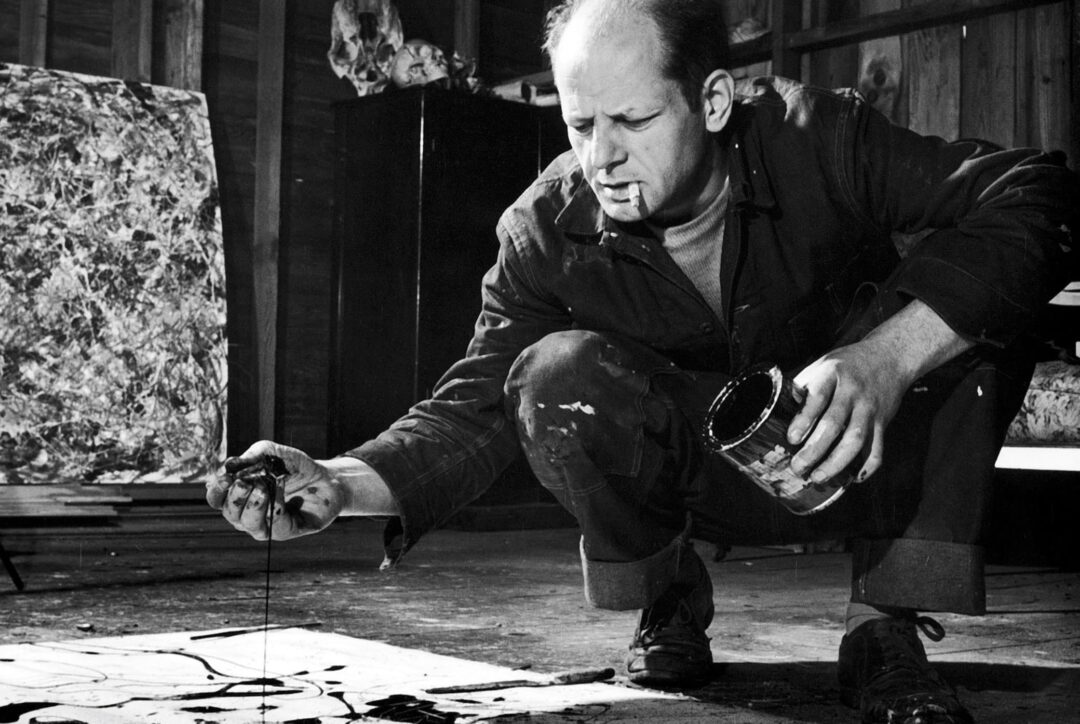

Sick, and Sick of It All
by | Mar 8, 2024
Sometimes it takes our bodies to return us to our souls. And our little pains to remind us of the indescribable pain of the savage killing and dismemberment of innocent children and adults in Gaza and many other places by U.S. weapons produced in clean factories by people just doing their jobs and collecting their pay at “defense” contractors Raytheon, Lockheed Martin, Pfizer, etc. Abstraction is the name of the game as human bodies are torn to pieces “over there” and the obscene profits are transferred at the computer terminals day and night.
Living in a technological world of the internet divorces us from real life as it passes into inert, abstract, and dead screen existence. It should not be surprising that people grow sick and tired of the steady streams of “news” that fills their days and nights. So much of the news is grotesque; propaganda abounds. Stories twisted right and left to tie minds into knots. After a while, as Macbeth tells us, life seems like “a walking shadow, a poor player, that struts and frets its hour upon the stage, and then is heard no more. It is a tale told by an idiot, full of sound and fury, signifying nothing.”
Being sick and out of it for a while allows one a different perspective on the world. This is especially true for those of us who often write about politics and propaganda. A recent illness has forced me to step away from my usual routine of following political events closely. Fleeting headlines have been all I’ve noted for the past two weeks. While lying around waiting for the illness to leave, I would drift in and out of reveries and memories that would float to semi-consciousness. Feeling miserable prevented any focus or logical thinking, but not, I emphasize, thinking in a deeper, physical sense. But it also gave me a reprieve from noting the repetitive and atomizing nature of internet postings, as if one needs to be hammered over the head again and again to understand the world whose realities are much simpler than the endless scribblers and politicians are willing to admit.
Jonathan Crary, in a scathing critique of the digital world in Scorched Earth, puts it thus:
For the elites, the priority remains: keep people enclosed within the augmented unrealities of the internet complex, where experience is fragmented into a kaleidoscope of fleeting claims of importance, of never-ending admonitions on how to conduct our lives, manage our bodies, what to buy and who to admire or to fear.
I agree with Crary. During my sickness, I did manage to read a few brief pieces, an essay, a short story, and a poem. Serendipitously, each confirmed the trend of my thinking over recent years as well as what my bodily discomfit was teaching me.
The first was an essay by the art critic John Berger about the abstract expressionist, avant-garde painter Jackson Pollock, titled “A Kind of Sharing.” It struck me as very true. Pollock came to prominence in the late 1940s and early 1950s. He was described as an “action” painter who poured paint on large canvases to create abstract designs that were lauded by the New York art world. Some have sold for hundreds of millions of dollars. The description of Pollock as an untalented pourer, Berger says, is false, for Pollock was a very precise master of his art who was aware of how he was putting paint to canvas and of the effects of his abstractions. His work made no references to the outside world since such painting at that time was considered illustrative. Berger says that Pollock’s paintings were violent in that “The body, the flesh, had been rejected and they were the consequence of this rejection.” He argues that Pollock, who died in a drunken car crash in Easthampton, Long Island on August 11, 1956, was committing art suicide with his abstract paintings because he had rejected the ancient assumption of painting that the visible contained hidden secrets, that behind appearances there were presences. For Pollock, there was nothing beyond the surfaces of his canvases. This was because he was painting the nothingness he felt and wished to convey. A nihilism that was both personal and abroad in the society.
Pollock’s story is a sad one, for he was praised and used by forces far more powerful than he. Nelson Rockefeller, who was president of the Museum of Modern Art (MOMA) that his mother had cofounded, called Pollock’s work “free enterprise paintings,” and the CIA, through its Congress for Cultural Freedom, secretly promoted it as a Cold War weapon against the Soviet Union’s socialist realism art, even as right-wing congressmen ripped Pollock as a perverse artist. So in the name of openness, the CIA secretly promoted Pollock’s avant-gardism as real America art in a campaign of propaganda, while the right-wing bashed him as a perverted leftist. This sick double game became a template for future mind-control operations that are widespread today.
As was his habit, Berger brilliantly places Pollock’s work within social and political history, a description of a time very similar to today when the word “freedom” was bandied about. Then it was the freedom of the Voice of America extolling the Cold War tale of freedom of the “Free World”; freedom for artists to be free of rhetoric, history, the past, and to jettison the tyranny of the object; freedom of the market amidst a strident yet incoherent sense of loss. He writes:
At this moment, what was happening in the outside world? For a cultural climate is never separate from events. The United States had emerged from the war as the most powerful nation in the world. The first atom bomb had been dropped. The apocalypse of the Cold War had been placed on the agenda. McCarthy was inventing his traitors. The mood in the country that had suffered least from the war was defiant, violent, haunted. The play most apt to the period would have been Macbeth, and the ghosts were from Hiroshima.
Today’s ghosts are still from Hiroshima and Macbeth is still apposite, and the ghosts of all the many millions killed since then haunt us now if we can see them. Although their bodies have disappeared out the back door of the years – and continue to do so daily – true art is to realize their presence, to hear their cries and conjure up their images. While the word freedom is still bandied about in this new Cold War era where the sense of social lostness is even more intense than in Pollock’s time, it often comes from a nihilistic despondency similar to Pollock’s and those who used atomic weapons, a belief that appearances and surfaces are all and behind them there is nothing. Nada, nada, nada. A society that Roberto Calasso calls “an agnostic theocracy based on nihilism.” Berger concludes:
Jackson Pollock was driven by a despair which was partly his and partly that of the times that nourished him, to refuse this act of faith [that painting reveals a presence behind an appearance]: to insist, with all his brilliance as a painter, that there was nothing behind, that there was only that which was done to the canvas on the side facing us. This simple, terrible reversal, born of an individualism that was frenetic, constituted the suicide.
This short essay by Berger about Pollock’s denial of the human body struck me as my own body was temporarily failing me. It seemed to contain lessons for the augmented realities of the internet and the new Cold War being waged for the control of our minds and hearts today. Inducements to get lost in abstractions.
Then one day I picked up another book from the shelf to try to distract myself from my physical misery. It was a collection of stories by John Fowles. I read the opening novella – “The Ebony Tower” – haltingly over days. It was brilliant and eerily led me to a place similar to that of Berger’s thoughts about Pollock. Fowles explores art and the body against a dreamy background of a manor house in the French countryside. As I read it lying on a couch, I fell in and out of oneiric reveries and sleep, induced by my body’s revolt against my mind. Trying to distract myself from my aches and pains, I again found myself ambushed by writing about corporality. Both Berger and Fowles sensed the same thing: that modernity was conspiring to deny the body’s reality in favor of visual abstractions. That in doing so our essential humanity was being lost and the slaughters of innocent people were becoming abstractions. Then the Internet came along to at first offer hope only to become an illusion of freedom increasingly controlled by media in the service of deep-state forces. Soon the only way to write and distribute the truth will be retro – on paper and exchanged hand to hand. This no doubt sounds outlandish to those who have swallowed the digital mind games, but they will be surprised once they fully wake up.
Fowles’s story is about David, an art historian who goes to visit a famous, cranky old painter named Henry Breasely. The younger man is writing about the older and thinks it would be interesting to meet him, even though he thinks it isn’t necessary to write the article he has already composed in his mind. The art historian, like many of his ilk, lives in his mind, in academic abstractions. He is in a sense “pure mind,” in many ways a replica of T.S. Eliot’s neurotic J. Alfred Prufrock. The old painter lives in the physical world, where sex and the body and nature enclose his world, where paint is used to illuminate the physical reality of life, its sensuousness, not abstractions, where physical life and death infuse his work, including political realities. Obviously not new to William Butler Yeats’ discovery as expressed in the conclusion to his poem “The Circus Animals’ Desertion”:
Those masterful images because complete
Grew in pure mind but out of what began?
A mound of refuse or the sweepings of a street,
Old kettles, old bottles, and a broken can,
Old iron, old bones, old rags, that raving slut
Who keeps the till. Now that my ladder’s gone
I must lie down where all the ladders start
In the foul rag and bone shop of the heart.
The old man fiercely defends the “foul rag and bone shop of the heart” against all abstractions and academic bullshit, which are the young man’s métier. He accuses the young critic of being afraid of the human body. When the critic responds, “Perhaps more interested in the mind than the genitals,” the caustic and funny painter says, “God help your bloody wife then.” He accuses the younger man of being in the game of destruction and castration, of supporting abstractions at the expense of flesh and blood life. “There are worse destroyers around than nonrepresentational art,” the critic says in his defense. To which the painter roars, “You’d better tell that to Hiroshima. Or to someone who’s been napalmed.”
Back and forth they go, as a nubile art student, who is there to help the elderly artist, acts as a sort of interlocutor. Her presence adds a sexual frisson throughout the story, a temptation to the milk-toast critic’s life of sad complacency. The wild old man’s rants – he calls Jackson Pollock Jackson Bollock – are continually paraphrased by the girl. She says, “Art is a form of speech. Speech must be based on human needs, not abstract theories of grammar. Or anything but the spoken word. The real word. . . . Ideas are inherently dangerous because they deny human facts. The only answer to fascism is the human fact.”
The old painter’s uncensored tongue brought tears of laughter to my eyes and a bit of relief to my aches and pains. I was primarily taken aback by the weirdness of haphazardly reading a second piece that coincided with my deepest thoughts that had been intensified by my body’s revolt. The narrator’s words struck me as especially true to our current situation:
What the old man still had was an umbilical chord to the past; a step back, he stood by Pisanello’s side. In spirit, anyway. While David was encapsulated in book knowledge, art as social institution, science, subject, matter for grants and committee discussion. That was the real kernel of his wildness. David and his generation, and all those to come, could only look back, through bars, like caged animals, born in captivity, at the old green freedom. That described exactly the experience of those last two days: the laboratory monkey allowed a glimpse of his lost true self.
The Internet life has made caged monkeys of us all. We seem to think we are seeing the real world through its connectivity bars, but these cells that enclose us are controlled by our zoo keepers and they are not our friends. Their control of our cages keeps increasing; we just fail to see the multiplying bars. They have created a world of illusions and abstractions serving the interests of global capitalism. Insurgent voices still come through, but less and less as the elites expand their control. As internet access has expanded, the world’s suffering has increased and economic inequality heightened. That is an unacknowledged fact, and facts count.
Toward the end of my two-week stay in the land of sickness, I read this poem by the Palestinian poet Refaat Alareer, who was killed in Gaza by an IDF airstrike on December 6, 2023 along with his brother, nephew, sister, and three of her children. My sickness turned to rage.
If I Must Die
If I must die,
you must live
to tell my story
to sell my things
to buy a piece of cloth
and some strings,
(make it white with a long tail)
so that a child, somewhere in Gaza
while looking heaven in the eye
awaiting his dad who left in a blaze —
and bid no one farewell
not even to his flesh
not even to himself —
sees the kite, my kite you made, flying up above,
and thinks for a moment an angel is there
bringing back love.
If I must die
let it bring hope,
let it be a story.




